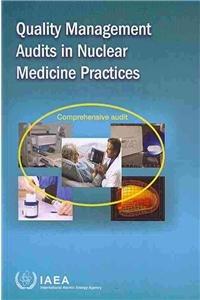Question
Statement of Cash Flows The Statement of Cash Flows (also referred to as the cash flow statement) is one of the three key financial statements
Statement of Cash Flows
The Statement of Cash Flows (also referred to as the cash flow statement) is one of the three key financial statements that report the cash generated and spent during a specific period of time (e.g., a month, quarter, or year). The statement of cash flows acts as a bridge between the income statement and balance sheet by showing how money moved in and out of the business.
Three Sections of the Statement of Cash Flows:
- Operating Activities: The principal revenue-generating activities of an organization and other activities that are not investing or financing; any cash flows from current assets and current liabilities
- Investing Activities: Any cash flows from the acquisition and disposal of long-term assets and other investments not included in cash equivalents
- Financing Activities: Any cash flows that result in changes in the size and composition of the contributed equity capital or borrowings of the entity (i.e., bonds, stock, dividends)
Cash Flow Definitions
Cash Flow: Inflows and outflows of cash and cash equivalents (learn more in CFIs Ultimate Cash Flow Guide)
Cash Balance: Cash on hand and demand deposits (cash balance on the balance sheet)
Cash Equivalents: Cash equivalents include cash held as bank deposits, short-term investments, and any very easily cash-convertible assets includes overdrafts and cash equivalents with short-term maturities (less than three months).
Cash Flow Classifications
1. Operating Cash Flow
Operating activities are the principal revenue-producing activities of the entity. Cash Flow from Operations typically includes the cash flows associated with sales, purchases, and other expenses.
The companys chief financial officer (CFO) chooses between the direct and indirect presentation of operating cash flow:
- Direct Presentation: Operating cash flows are presented as a list of cash flows; cash in from sales, cash out for capital expenditures, etc. This is a simple but rarely used method, as the indirect presentation is more common.
- Indirect Presentation: Operating cash flows are presented as a reconciliation from profit to cash flow
The items in the cash flow statement are not all actual cash flows, but reasons why cash flow is different from profit.
Depreciation expense reduces profit but does not impact cash flow (it is a non-cash expense). Hence, it is added back. Similarly, if the starting point profit is above interest and tax in the income statement, then interest and tax cash flows will need to be deducted if they are to be treated as operating cash flows.
There is no specific guidance on which profit amount should be used in the reconciliation. Different companies use operating profit, profit before tax, profit after tax, or net income. Clearly, the exact starting point for the reconciliation will determine the exact adjustments made to get down to an operating cash flow number.
2. Investing Cash Flow
Cash Flow from Investing Activities includes the acquisition and disposal of non-current assets and other investments not included in cash equivalents. Investing cash flows typically include the cash flows associated with buying or selling property, plant, and equipment (PP&E), other non-current assets, and other financial assets.
Cash spent on purchasing PP&E is called capital expenditures (or CapEx for short).
3. Financing Cash Flow
Cash Flow from Financing Activities are activities that result in changes in the size and composition of the equity capital or borrowings of the entity. Financing cash flows typically include cash flows associated with borrowing and repaying bank loans, and issuing and buying back shares. The payment of a dividend is also treated as a financing cash flow.
Based on the upper information,
Question: What is the difference between the direct and indirect method of cash flow preparation? Which method provides better information and why?
Step by Step Solution
There are 3 Steps involved in it
Step: 1

Get Instant Access to Expert-Tailored Solutions
See step-by-step solutions with expert insights and AI powered tools for academic success
Step: 2

Step: 3

Ace Your Homework with AI
Get the answers you need in no time with our AI-driven, step-by-step assistance
Get Started


